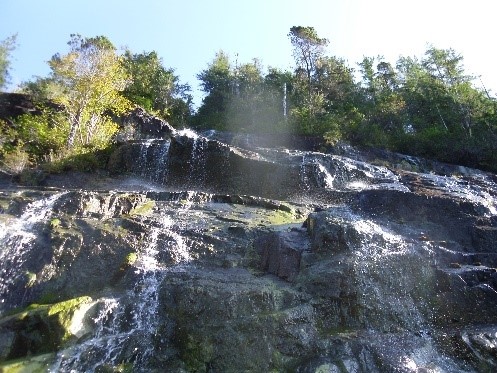
Environmental Science Undergraduate Theses
Date of Award
Summer 8-19-2024
Document Type
Undergraduate Thesis
Department
Environmental Science
First Advisor
Julie Masura
Second Advisor
Cheryl Greengrove
Abstract
Alexandrium catenella is a toxic dinoflagellate that has two life stages, a dormant cyst form within bed sediment, and a vegetative form that swims freely in the water column. Both produce a saxitoxin that can bioaccumulate within shellfish and when ingested by mammals, could potentially lead to paralytic shellfish poisoning (PSP). This project looked at the distribution of cysts of A. catenella in the Salish Sea to inform shellfish harvesters of the potential for harmful algal blooms in their region. In order to analyze for cysts, sediment was collected at 50 stations throughout the Salish Sea. These samples were processed and stained with Primulin, then viewed under a fluorescence microscope to identify and quantify the cysts present. The average cyst counts for all stations was 8 cysts/cc(wet) and 3 cysts/cc(dry). The highest cyst counts came from Central Basin-North, and Hood Canal-Central. Both locations shared 40 cysts/cc(wet) and 12 cysts/cc(dry). The low was 0, which was shared across 20 stations. Compared to 2022, there was an increase in cysts in areas around the south Puget Sound, more specifically Hood Canal, Dyes Inlet, and the Central Basin. For 2023, there was a decrease in cysts in Bellingham Bay, which is known to be a hotspot/seedbed for A. catenella. This data was shared with stakeholders to be used to determine if increased monitoring would be needed in locations where cysts were found.
Recommended Citation
Scheschy, Peyton, "2023 Analysis of Harmful Algae in Bed Sediments of the Puget Sound in the Salish Sea" (2024). Environmental Science Undergraduate Theses. 8.
https://digitalcommons.tacoma.uw.edu/envsci_theses/8
Included in
Environmental Health and Protection Commons, Environmental Monitoring Commons, Environmental Public Health Commons, Oceanography Commons
